Coming to America
America 1920—the Roaring ’20s. The Jazz Age. A time of expansion, rapid social change, new technology, and numerous areas of growth. Words such as yoga, meditation, pranayama, gurus, or kundalini were virtually unknown. Think for a moment about the music of the ’20s, flapper culture and fashion, American women gaining the right to vote, the end of World War I, first commercial radio broadcasts, and materialistic mindsets in a society bustling with a flourishing economy.
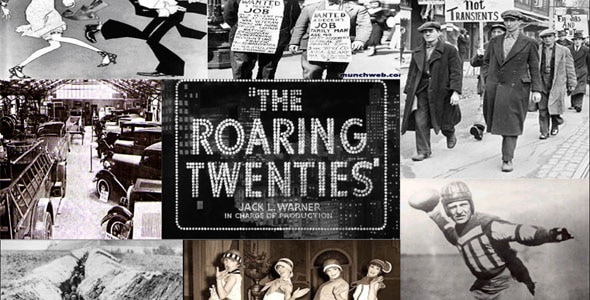
Enter Paramhansa Yogananda (1893–1952), who first set foot in America on the ultra-conservative soil of Boston, Massachusetts.
Unknown in the new land, this small man (1,70m/5’7″) was in truth, a towering soul — an avatar, a liberated master invested by his line of gurus with a world-changing mission to bring and spread Yoga — Kriya Yoga — in the West. They told him that:
Kriya Yoga, the scientific technique of God-realization, will ultimately spread in all lands, and aid in harmonizing the nations through man’s personal, transcendental perception of the Infinite Father.
For ten years his guru Sri Yukteswar had carefully prepared him for this Herculean task, insisting that he also be a college graduate:
Someday you will go to the West…Swami Sri Yukteswar
Someday you will go to the West. Its people will lend ears more receptive to India’s ancient wisdom if the strange Hindu teacher has a university degree.
Even with a college degree, Yogananda was no less strange to Western audiences, often ridiculed for his silk robes and long hair. He was sometimes asked if he was a man or a woman. He often wore a turban—the only one in town.
He was also dark and brown-skinned. The color of his skin greatly mattered as America’s legacy of racial intolerance was in full effect. American slavery had ended nearly 60 years prior to his arrival but prejudice and racial intolerance continued to tarnish and affect nearly every aspect of American life, and Yogananda was not spared. He too was subjected to bigotry. His dark skin was sometimes mistaken for “diluted” African heritage.
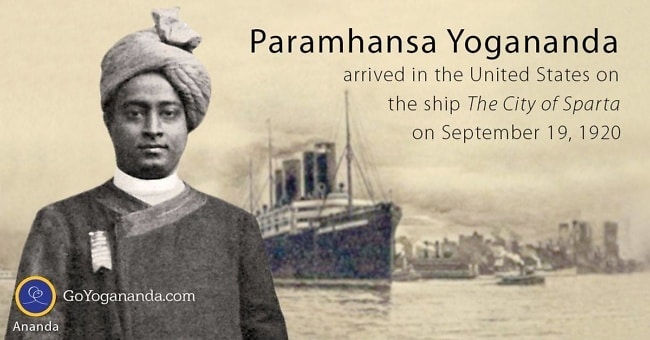
His evident, infinite superiority was particularly annoying to white supremacists. Religionists were unhappy about his work and message of unity highlighting the inadequacies of their dogmas.
For all these reasons, his major success and impact on Western culture was nothing short of miraculous. In such an unfavorable and sometimes even hostile cultural environment, a young Yogananda, just 27 years of age with his shining personality and spiritual power, single-handedly began his “campaigns” to conquer America. It was often a tough proposition, for sure. His worst moment must have been in Miami, Florida, where he was literally run out of town. The local press stated that “his life was threatened by a delegation of indignant citizens.” Yogananda called it “my crucifixion.”
Yogananda’s name was put on a government watch list and he was kept under surveillance by both the FBI and British authorities concerned about the growing independence movement in India. They kept a confidential file on him between 1926–37 due to trepidation over his religious and moral practices.
Fortunately for us all, America is a globally inquisitive country. America is curious, innovative, and has, by and large, a deeply spiritual heart. Yogananda was able to begin conquering the young culture as he courageously toured from city to city with his universal message of the three-fold healing of body, mind, and soul, and of meditation and Kriya Yoga.
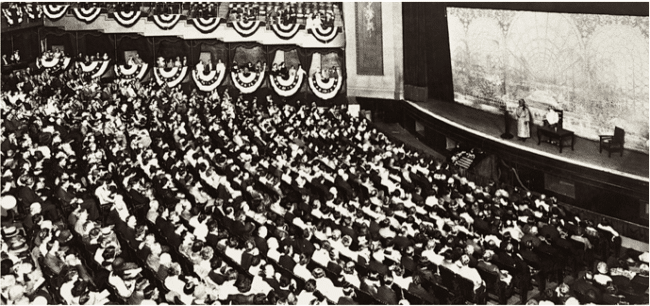
Thousands and thousands flocked to Yogananda’s lectures. It was previously unheard of for a spiritual speaker to attract such large audiences. He filled the largest halls in America — Carnegie Hall in New York, the Philharmonic Auditorium in Los Angeles, and a Denver auditorium (shown here) in 1924. A crowd of 5000 listened to him in a Washington, D.C. auditorium. He was taking America by storm.
Self-Realization Fellowship (SRF), the organization he founded, states that he personally initiated 100,000 seekers into the techniques of the Kriya Yoga path. His mission was to have a major impact on American society. Nonetheless, all of this, as he wrote, was only the tiniest beginning of an oceanic movement: “The blessed role of Kriya Yoga in the West has hardly more than just begun.” He explained his long-range vision: “Hundreds of thousands of Kriya Yogis are needed to bring into manifestation a world of peace.”
Yogananda’s message echoed the ancient Vedic precepts: “Each man is a part of the Creator or Cosmic Man” and in essence “is an all-pervading spirit,” created by God as “a soul, dowered with individuality.” Our goal is to find that true Self, our soul. Yogananda’s main teaching, therefore, was Self-realization.
The blessed role of Kriya Yoga in the West has hardly more than just begun… Hundreds of thousands of Kriya Yogis are needed to bring into manifestation a world of peace.Paramhansa Yogananda
Two other great yogis had come to America before him, offering the ancient wisdom of India: Swami Vivekananda and Rama Tirtha. Both had stayed for only a few years. Yogananda, on the other hand, dedicated his entire adult life — over 30 years — to spreading the yogic message throughout the West. He “broke the ice,” so to speak, for yoga in the USA. That is why the great scholar David Frawley described him as “the father of yoga in the West.”
Paramhansa YoganandaThe blessed role of Kriya Yoga in the West has hardly more than just begun… Hundreds of thousands of Kriya Yogis are needed to bring into manifestation a world of peace.[/x_pullquote]
Yogananda urged the crowds to meditate and to experience truth personally, telling them: “Ever-new Joy is God. Ever-new joy is evidence of His existence.” It was an utterly new approach to God who was explained to live in the very depths of our being. This, he told the world, had been the authentic message of Jesus: “Behold, the kingdom of God is within you” (Luke 17:21). Likewise, it is the true message of Krishna in the Bhagavad Gita (18,61): “The Lord is lodged in the heart of all beings.”
Such statements represent one of Yogananda’s major commissions: to reveal the basic oneness of original Christianity and original yoga. Truth is one and eternal.
Many celebrities became interested in his mission. In 1927, US President Coolidge hosted his visit to the White House. Has any other yoga-master ever received that honor? Actually Yogananda, called “the 20th century’s first superstar guru” by the Los Angeles Times, was received by three world leaders: President Calvin Coolidge from the USA, President Portes Gil from Mexico, and Prime Minister Nehru from India.
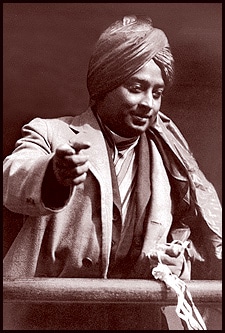
This shows his enormous and expansive thrust. He was by no means a hermit or a withdrawn monk but a charismatic, magnetic, outgoing master. His spirit was that of a spiritual conqueror, who inspired the masses, setting hearts ablaze. Certainly, part of his success was that he didn’t speak from dry theory, but from his own blissful experience, which he exuded with irresistible magnetism. It touched and transformed people everywhere.
From America’s business world, successful CEOs also became interested. Yogananda was in contact with Henry Ford, whom he asked to sponsor his first World-Brotherhood Colony. These colonies were part of Yogananda’s written Aims & Ideals. Other famous CEOs befriending him included George Eastman, the founder of Kodak.
Steve Jobs was known to have had just one book on his iPad 2: Autobiography of a Yogi, which he read once a year, and gave as his good-bye gift to 500 guests at his memorial service.
Today it would be fun if Yogananda could speak with Elon Musk, who asked, “Do I think that there’s some sort of master-intelligence architecting all of this stuff [creation]? I think probably not, because then you have to say ‘Where does the master-intelligence come from?’ So, it sort of begs the question.”
Yogananda answered that question long ago:
Many ask that question. Because they live in the realm of causation, they imagine that nothing can exist without a cause. God, however, the Supreme Cause, is beyond causation. It is not necessary that He, in turn, have a creator. How could the Absolute depend for Its creation on another Absolute?
Elon, listen! Great artists, the famous opera singers Amelita Galli-Curci and Vladimir Rosing, for example, began to study under Yogananda, who said, “In India, music, as well as painting and drama, is considered a divine art.” Later Elvis Presley became interested in his teachings, as did the Beatles. George Harrison was known to have regularly distributed the Autobiography of a Yogi.
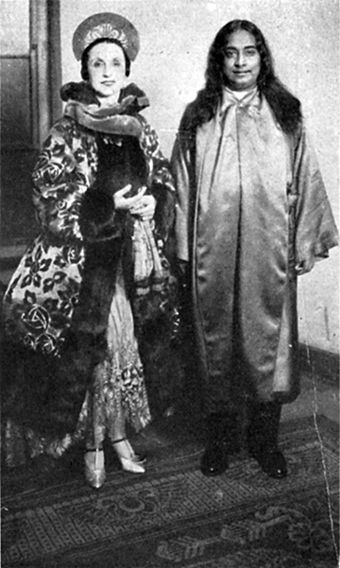
Yogananda and Amelia Galli-Curci at her Washington, DC concert, 1927.
Scientists, such as Luther Burbank, and university professors came to meet him. Yogananda discussed with them how science and spirituality share underlying principles.
Tirelessly he toured, wrote, and taught. America everywhere was slowly waking up to the ancient science of yoga.
What makes Yogananda particularly remarkable is not only was he the first guru to come to live in the West, but he also set an incredibly high bar for spirituality, spreading it with major success. It is easy, let’s say, to flood the Western world with a physically-oriented style of Hatha yoga. It is also relatively easy to spread a “pop-spirituality.” Yogananda, however, came with the loftiest teachings and wisdom of ancient India. The goal of life, he told the world, was to find God or Cosmic Consciousness. Therefore, he also introduced the concepts of a sacred guru-disciple relationship, which had been completely unknown before in the West.
Six years before his passing, in 1946, he published the Autobiography of a Yogi. That book did the rest to conquer the West. Millions have read it. Nobody seriously engaged in the culture of spirituality does not know it. Thomas Mann, the Nobel laureate, praised it. Many seekers found their own path through that book. SRF stated in 2006 that every year they sell about 50,000 copies. It is an amazing number. Ananda too sells thousands of copies of the original edition on various continents. There are many other spiritual autobiographies but only one Autobiography of a Yogi. It continues to completely stand out and will continue to do so for centuries. It will be, as Yogananda states, “my messenger.”
A Universal Master
Part of Yogananda’s outstanding success was his informality and openness. During his lifetime there were no uniforms in his ashrams. Renunciants and householders happily shared responsibilities. He also ran cafes, opened an American school in the very early years, and invited the governor of California to his events and functions. Yogananda loved nature and traveling. Common people easily related to him. He was an innovator, musician, poet, and author who inspired and reached people on many levels.
Most importantly, Yogananda was truly a universal Master who taught timeless principles. He knew that the more universal a message was, the farther it would travel but the more organizationally-centered it was, the more it would stagnate. People love universal principles but easily feel uncomfortable when a hierarchical institution is emphasized.
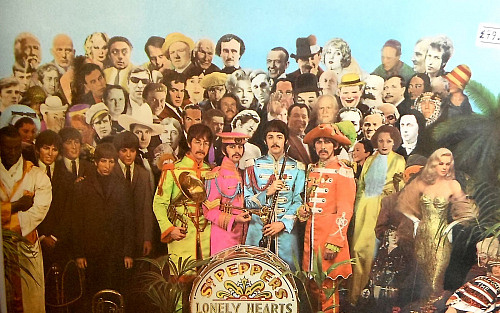
The Beatles’ Sargeant Pepper album cover contains images of Yogananda and our Self-Realization line of gurus.
Not long after Yogananda left his body, there was a major yoga boom in America in the ’60s and ’70s. The Beatles played an important role in this boom. Famous gurus arrived in the West, and countless spiritual books flooded the market. All of them were building on Yogananda’s previous work. All of them were riding the wave Yogananda had created. He had set the groundwork.
Today, Yoga has become vastly popular and is an enormous industry in America and all over the Western hemisphere. Meditation too has also grown tremendously. Millions of people in the West now meditate.
Most of the interest and merit rightly goes to the magnetic, powerful, and God-inspired personality of Yogananda who single-handedly spiritually conquered the West. Paramhansa Yogananda is unarguably the father of Yoga in the West.
Follow Yogananda Centennial Events at ananda.org
The majority of quotes are from Autobiography of a Yogi. The hypothetical reply to Elon Musk is from The Essence of Self-Realization, by Swami Kriyananda.
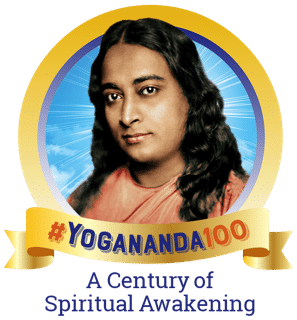

13 Comments
Dear Jayadev ji, thank you for this insightful, thoroughly informative article on Gurudev. Beautifully written. Filled with the Master’s light. The images very much add to the text, enjoyed reading and will share with loved ones. Thank you! Love and Light from Kolkata?
Jaydevji,
Pranam. I am blessed to be with you during your visit at Tulsi Bose Shrine and Kolkata Center. With you and Dithi I have a photo which is a treasure for me.
Wonderful Blog, beautifully written, worth reading.
Namaste Jaydev,
Thanks for publishing such a beautiful writeup on Yoganandji.
Many information given it are new to me.
Wow, thanks.
Thanks Dithi for sharing it with me.
??
thank you for this article , Love and Joy, Gyandevi
Wonderful article!
I copied it to give to people who ask me who my guru is.
Thank you, Jaydev.
Beautiful, Jayadevji, thanks so much!
What an incredible article! Thank you so much!
Jayadevji
Wonderful article.Written so beautifully
About our beloved Guru .Vivid description of his initial struggles in a foreign land is heart touching .And his conquering America spiritually is inspiring for all.Thank you
Jai Guru ??
Jayadevji, thanks for sharing beautiful wisdom of Parmahansa Yoganandaji. Lots of students started focusing on yoga techniques, meditation and some of them at lease brought awareness to their minds about greed, hostility and anger. Releasing negativity with breath and focusing on simplicity of life is a challenge. His message Unconditional Love is universal.Thanks
Fabulous write up Jaydev Ji. Very well said. It was very inspiring and with Yoganandaji’s centennial coming it was truly touching to read about how he took the west by storm. I really like what you said about the universality of his message and his magnetism.
Thank you very much for this enlightening article. Though I have read Autobiography of a Yogi twice and other publications of his writings, I am grateful that you included what Yogananda’s basic point about this practice of meditation. Certainly self realization is why one may choose to meditate. You quoted; “the goal in life is to find God or cosmic consciousness, therefore he introduced concepts of a sacred guru-disciple relationship.” My question to you, is why is there Self Realization Fellowship that he started and later Ananda as a separate entity? Thank you for your time. Looking forward to your answer. Sharman
Dear Sharman,
Yogananda founded Self-Realization Fellowship (SRF). It is a monastic order with many meditation groups all over the world. But Yogananda had another dream: World-Brotherhood colonies, a non-monastic lifestyle, where home, family, work, church, recreation, arts, school would be together, where people can live the principles of, “simple living and high thinking.” He said that such colonies (or communities) would be the lifestyle of the future. So this is why Swami Kriyananda started the Ananda movement. Yogananda had told him, “You have a great work to do.” The basic teachings and techniques of Ananda and SRF are the same, but the way of living them is not. One is monastic, the other is non-monastic, at least in the traditional sense. Both organisations follow the same goal: Self-realization, God-union.
I hope this answers your question.
All the best,
Jayadev
“Yogananda dreamed of places where people of all walks in life, not only monastics (Ananda does, however, have monastics) could devote themselves to living a life dedicated to “simple living and high thinking” by applying the teachings of yoga to every aspect of their lives…” Learn more @ http://www.paramhansayogananda.com/ananda_everydayextra/world-brotherhood-colonies